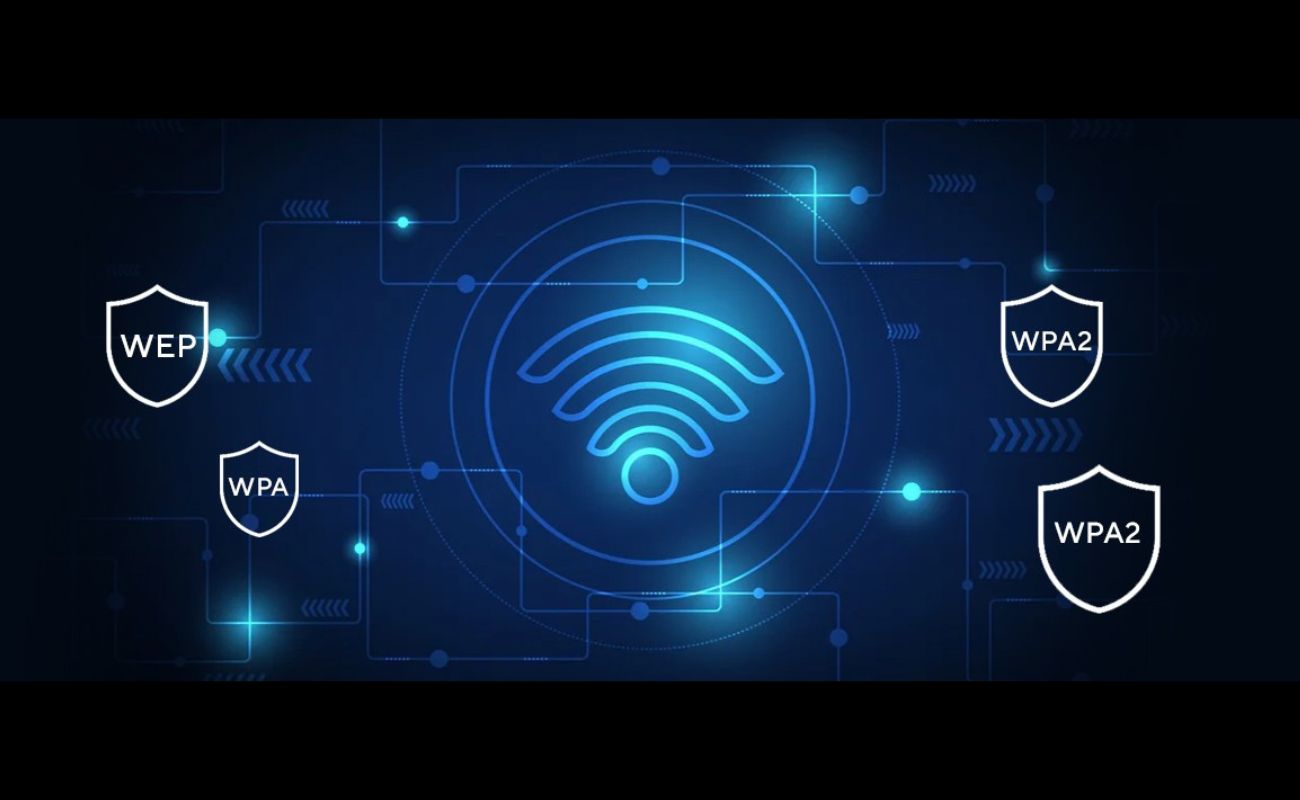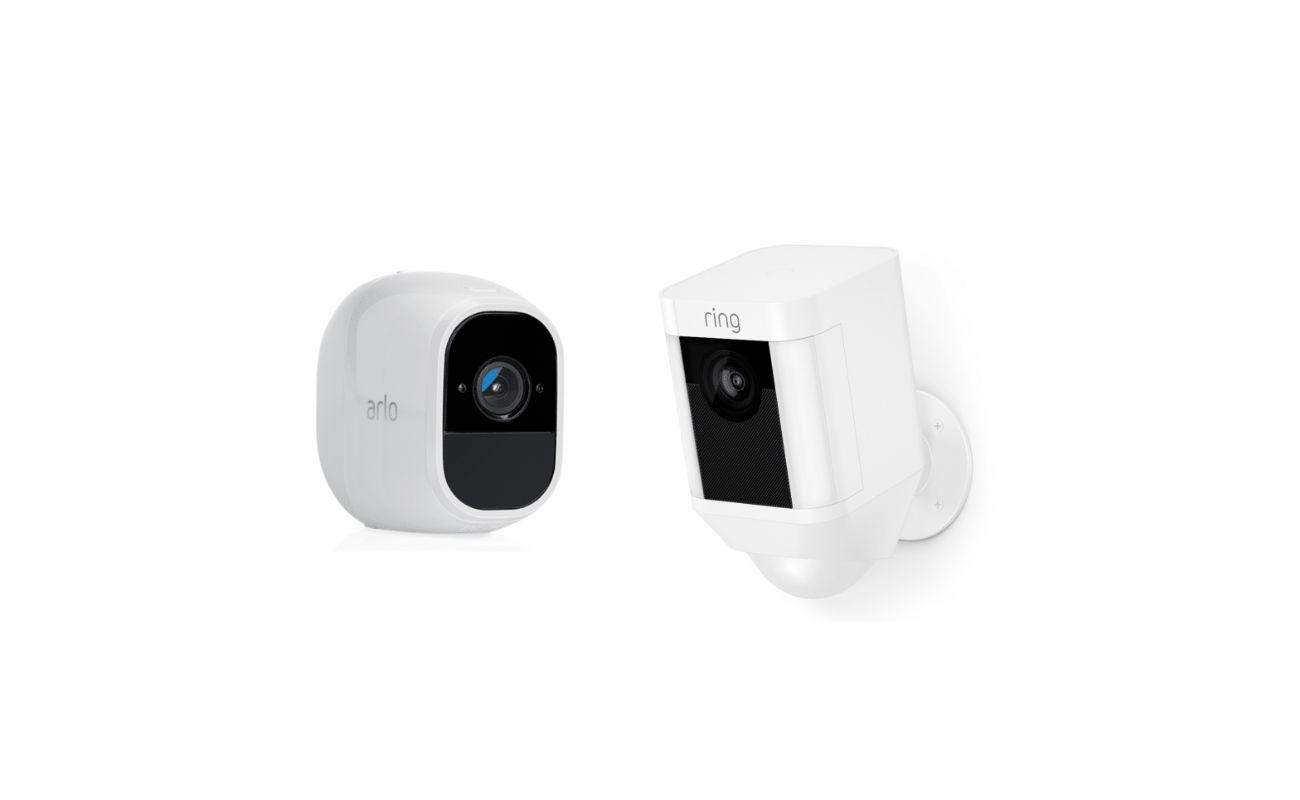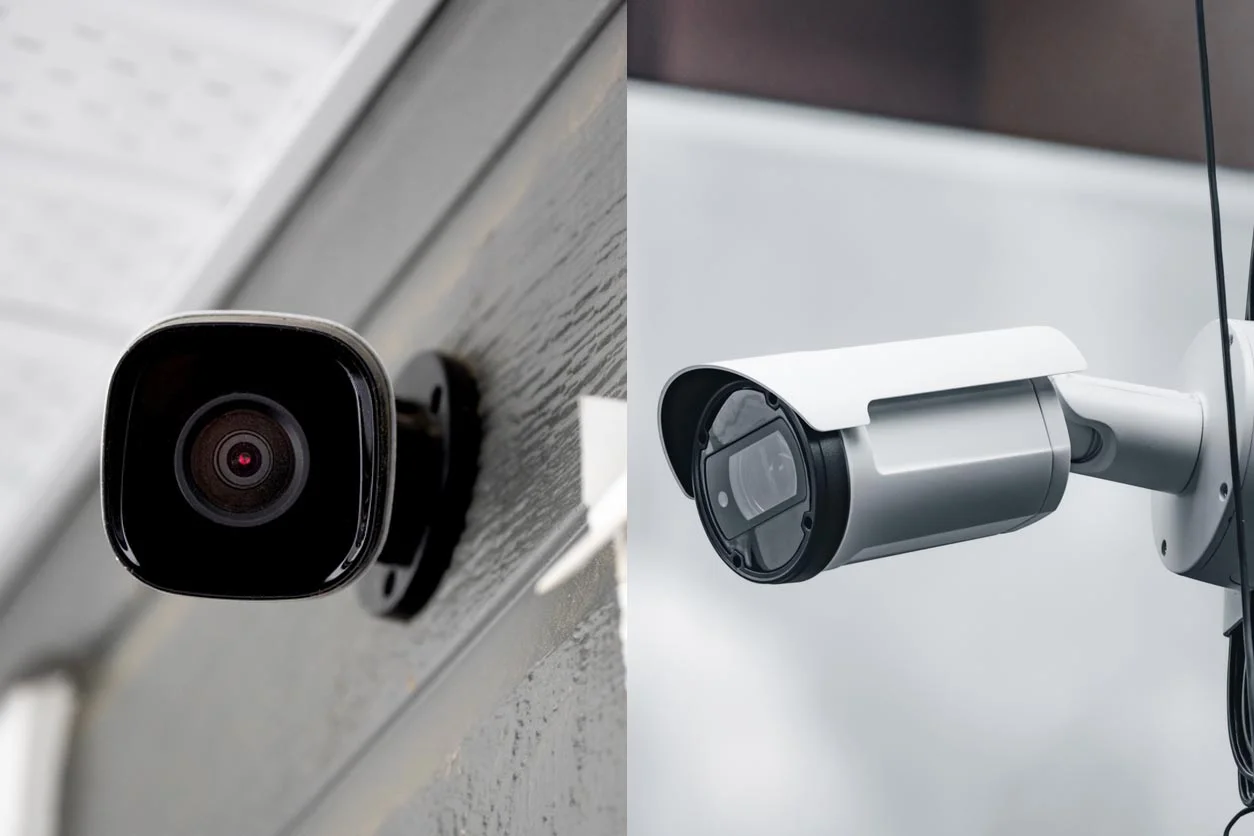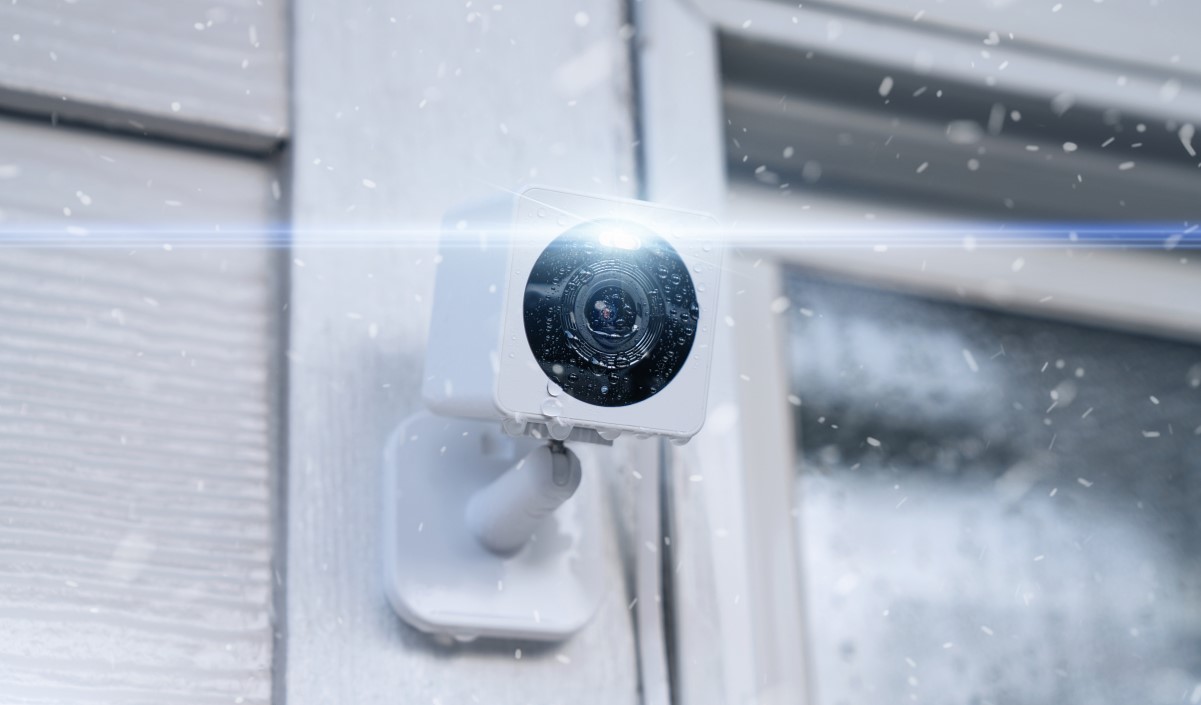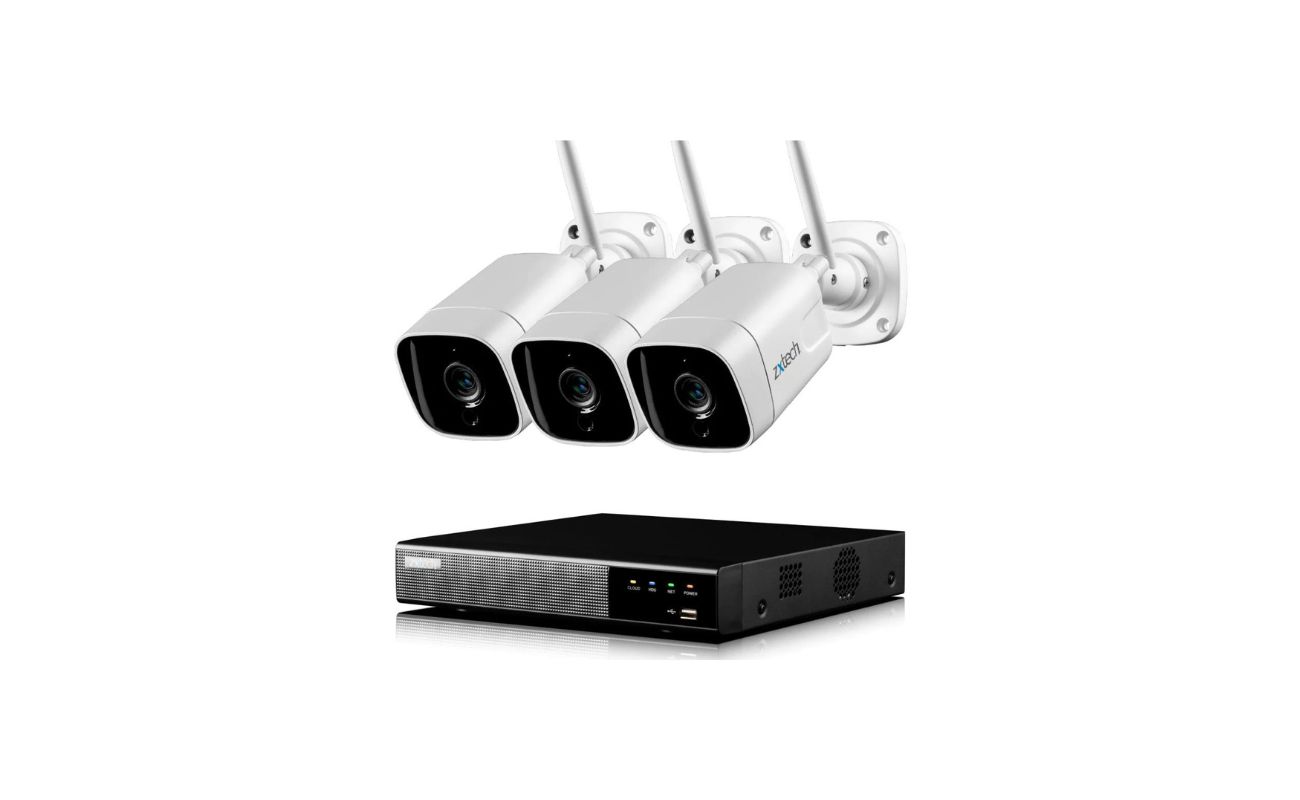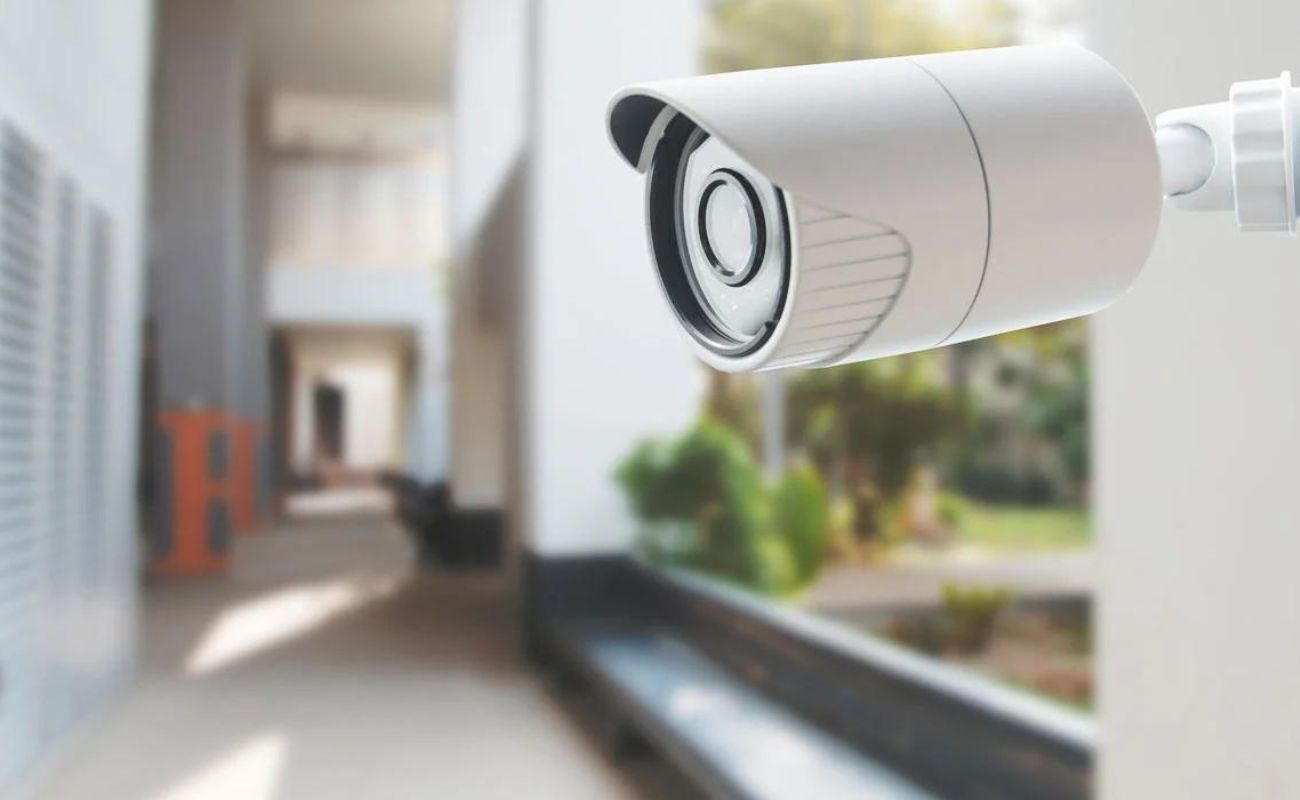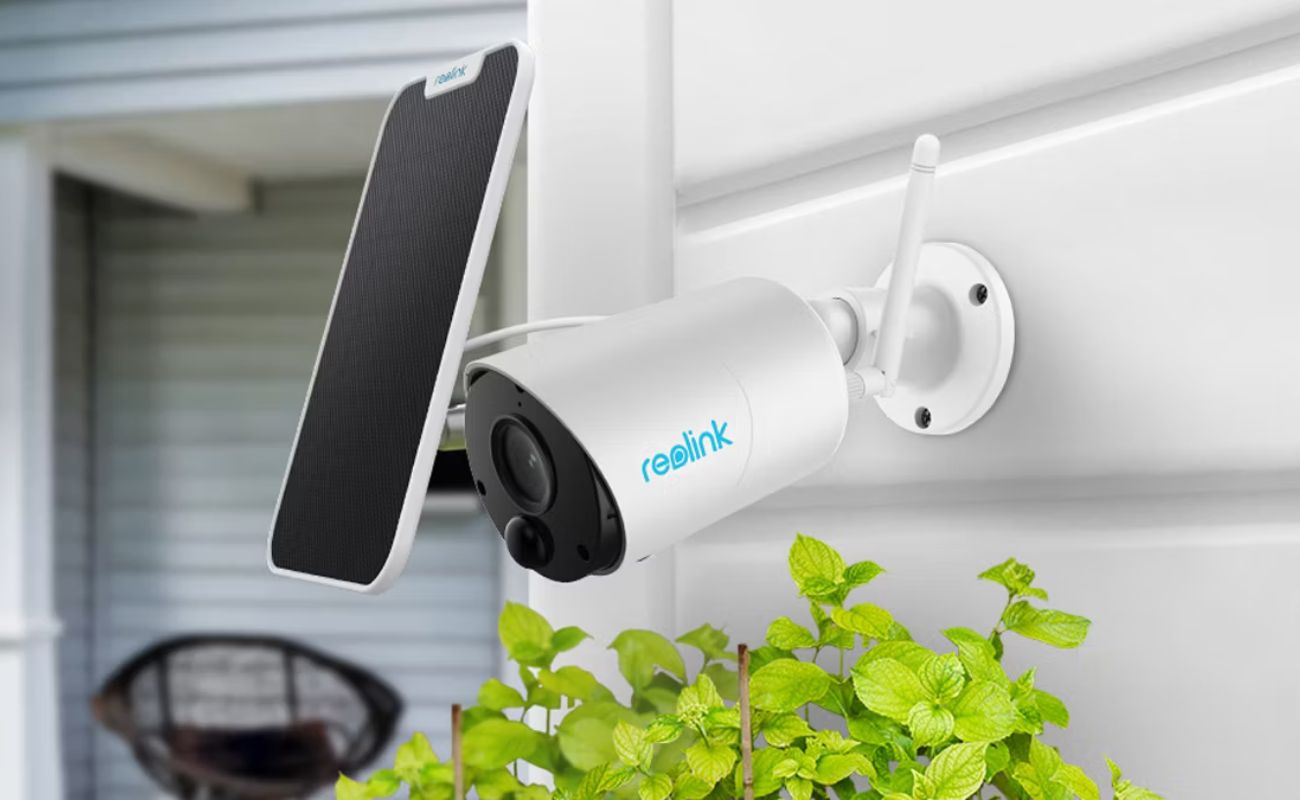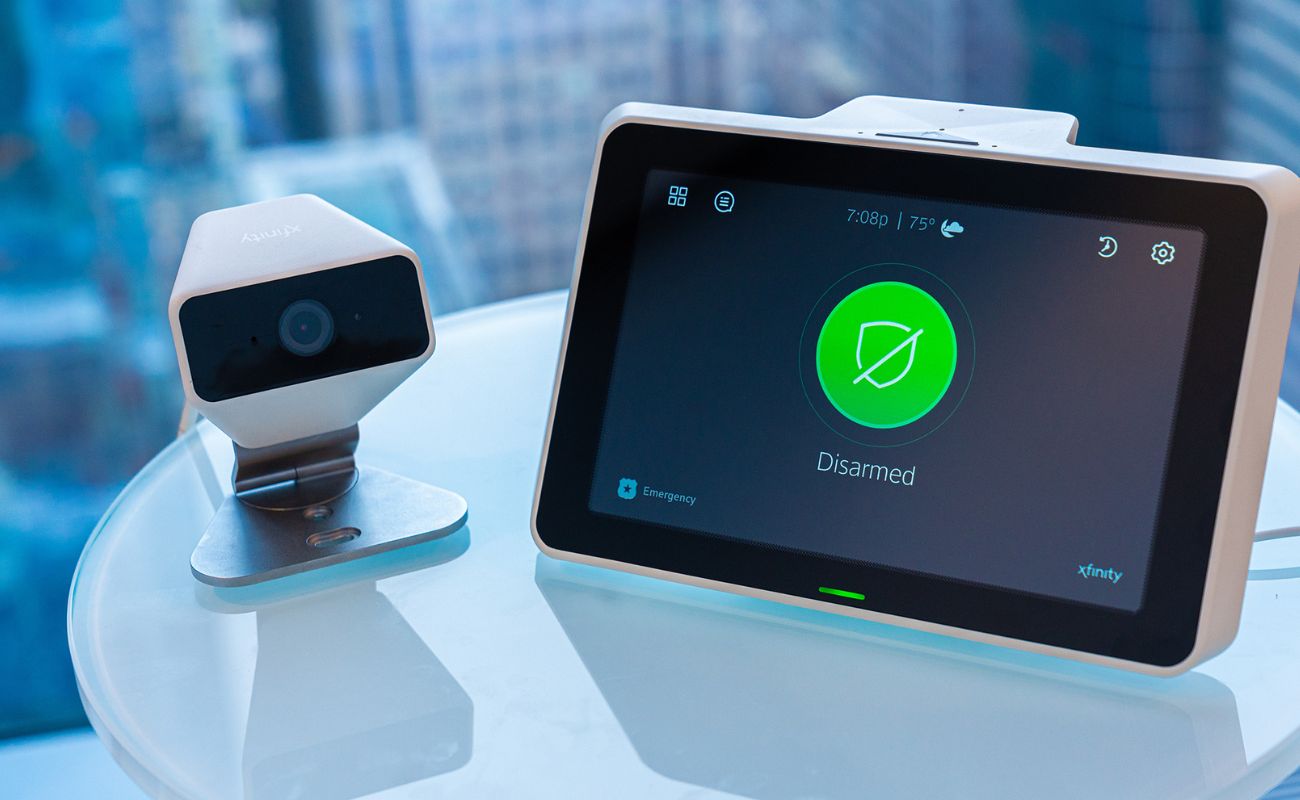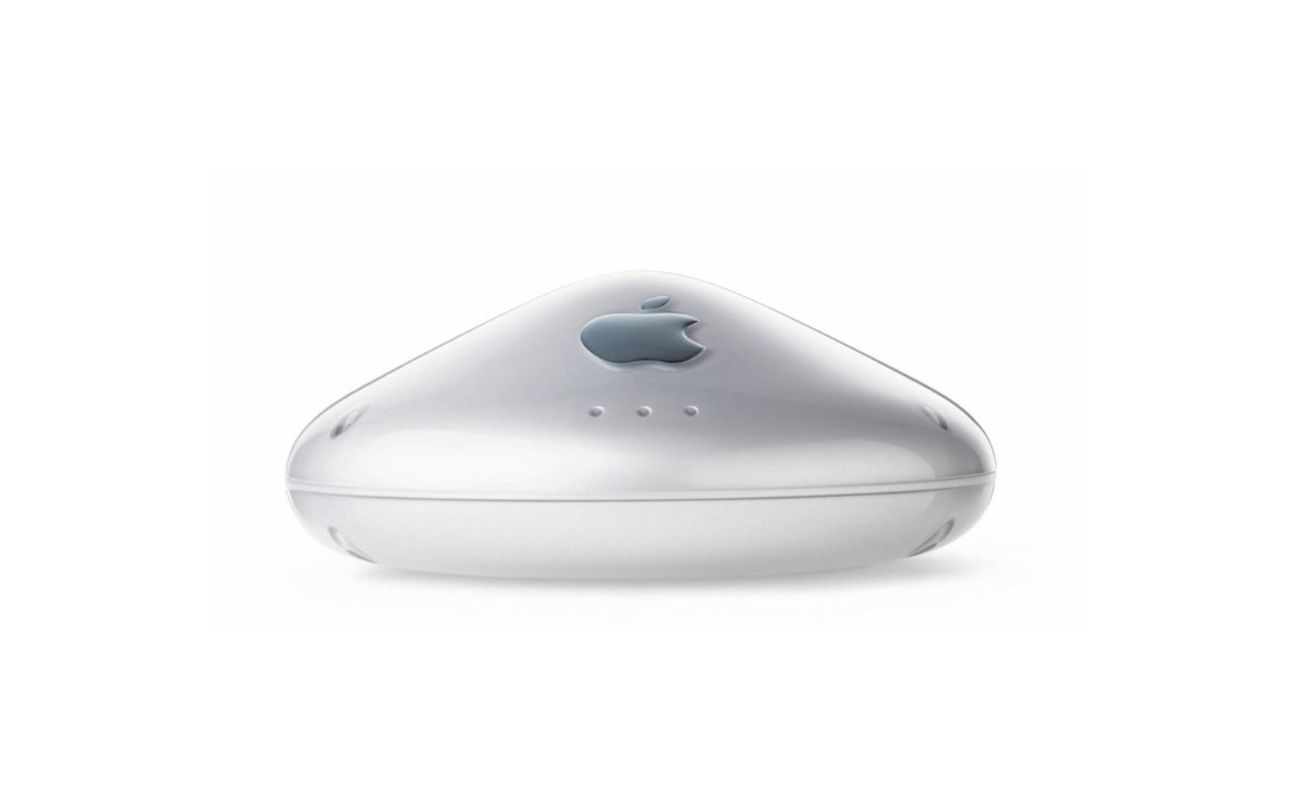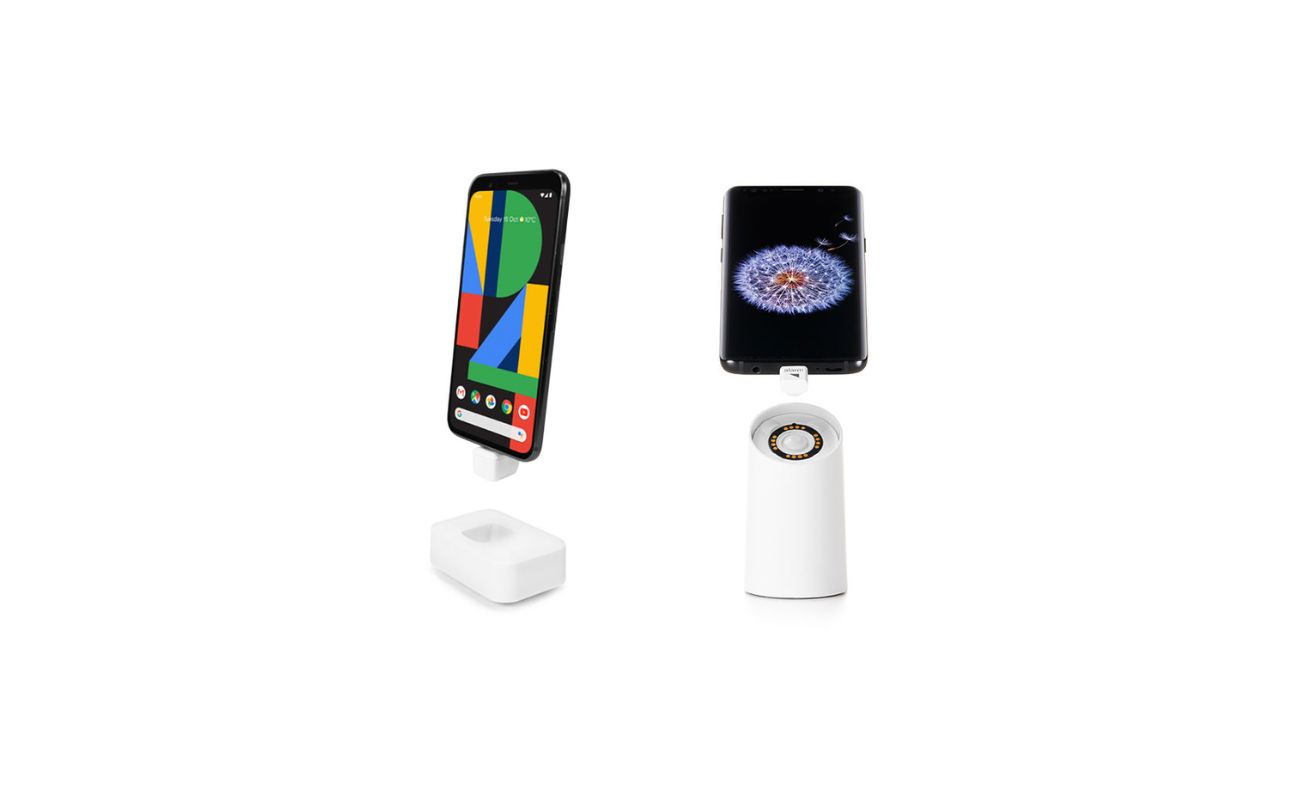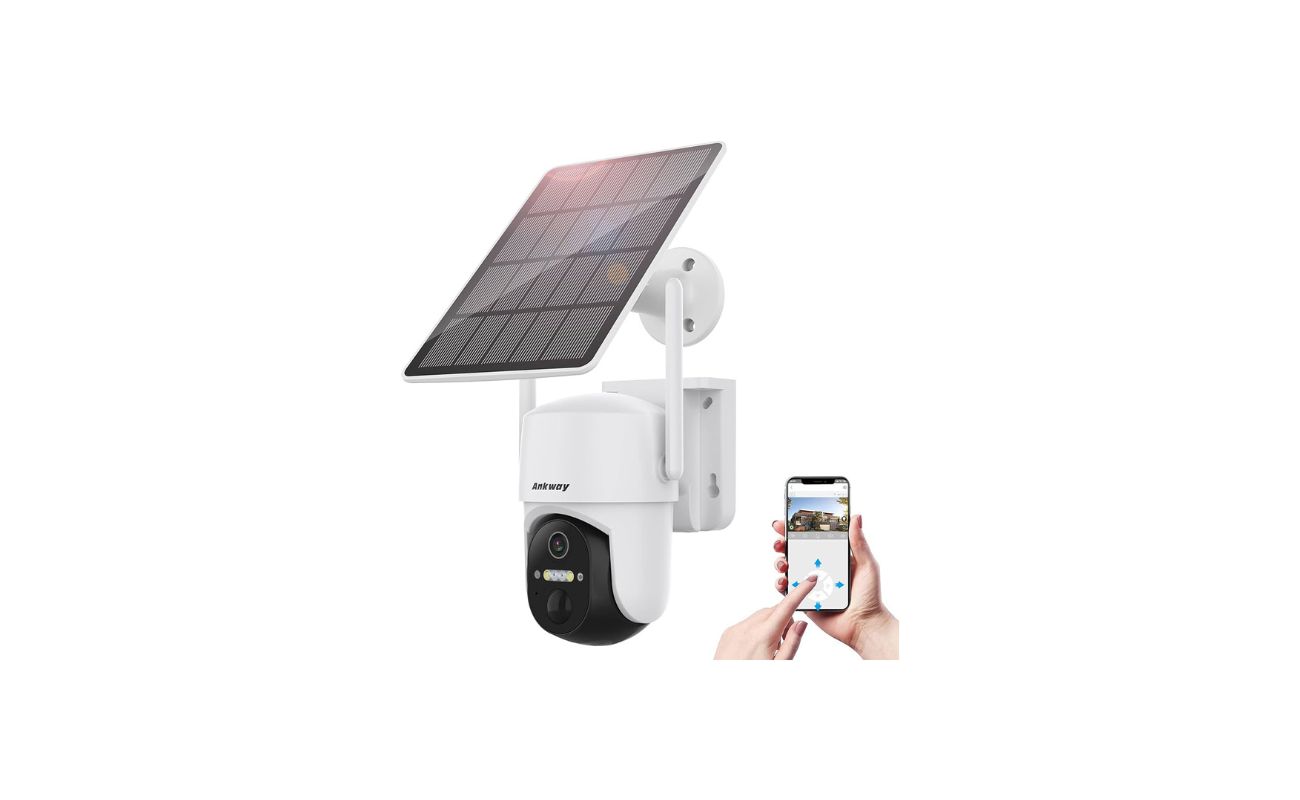Home>Home Security and Surveillance>Which Wireless Security Model Requires No Authentication?
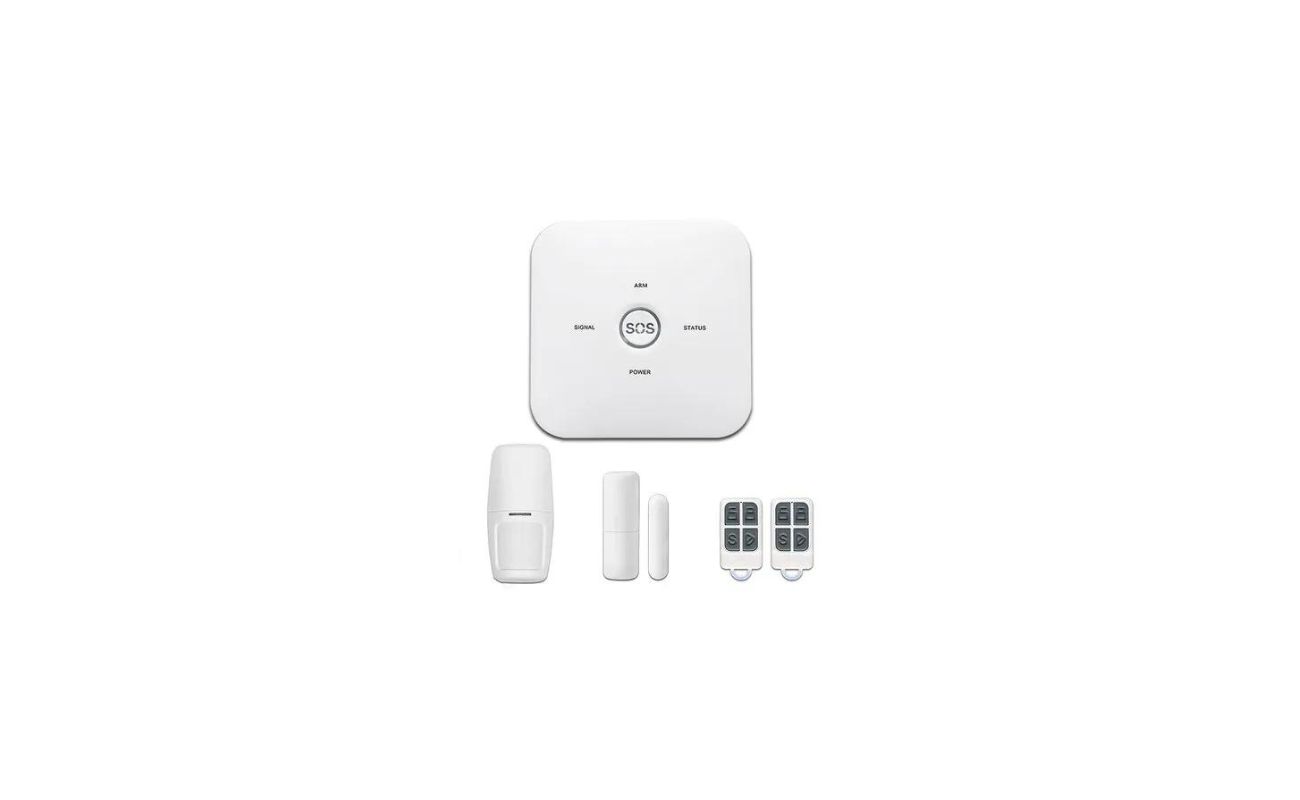

Home Security and Surveillance
Which Wireless Security Model Requires No Authentication?
Modified: March 6, 2024
Discover the wireless security model that requires no authentication for your home security and surveillance needs. Find out how to keep your property safe without any login or password hassles.
(Many of the links in this article redirect to a specific reviewed product. Your purchase of these products through affiliate links helps to generate commission for Storables.com, at no extra cost. Learn more)
Introduction
Welcome to the world of wireless home security and surveillance! In this increasingly interconnected age, the need for effective security measures to protect our homes and loved ones has become more crucial than ever. Wireless security systems offer convenience, flexibility, and peace of mind, allowing homeowners to monitor their homes remotely and deter potential intruders.
However, with the wide array of wireless security models available on the market, it can be overwhelming to determine which one best fits your needs. Each model has its unique features, strengths, and weaknesses. In this article, we will explore different wireless security models, their functionalities, and the advantages and limitations of each one.
It is important to note that while all wireless security models provide added protection compared to traditional wired systems, some offer higher levels of security than others. Understanding the differences between these models will enable you to make an informed decision and choose the most suitable option for your home.
So, without further ado, let’s dive into the fascinating world of wireless home security and surveillance models and discover the ideal one for you!
Key Takeaways:
- Choose WPA2 or WPA3 for maximum security
When setting up a wireless home security system, opt for WPA2 or WPA3 to ensure the highest level of protection against unauthorized access and potential security breaches. - Avoid open or no authentication models
Steer clear of open or no authentication wireless security models to safeguard your home and loved ones. These models pose significant security risks and should be used sparingly, if at all.
Read more: Which Wireless Security For Linksys
Wireless Security Models
When it comes to wireless home security and surveillance, there are several models available, each designed to provide varying levels of protection and authentication. Let’s take a look at some of the most common wireless security models:
- Open System: The open system is the most basic wireless security model. It does not require any form of authentication, meaning that anyone within range can connect to the network. While this model offers convenience, it also leaves your network vulnerable to unauthorized access.
- WEP (Wired Equivalent Privacy): WEP was one of the earliest encryption standards for Wi-Fi networks. It uses a shared key authentication mechanism to encrypt data. However, WEP has significant security flaws and is no longer recommended as it can be easily cracked by determined attackers.
- WPA (Wi-Fi Protected Access): WPA was introduced as a replacement for WEP. It provides stronger security through the use of the TKIP (Temporal Key Integrity Protocol) encryption algorithm. WPA also introduced the use of PSK (Pre-Shared Key) for authentication, ensuring that only authorized devices can connect to the network. While an improvement over WEP, WPA is still susceptible to certain types of attacks.
- WPA2 (Wi-Fi Protected Access 2): WPA2 is currently the most widely used wireless security model. It offers enhanced security features compared to WPA, including the use of the AES (Advanced Encryption Standard) algorithm. WPA2 requires stronger authentication, such as a unique password for each device connecting to the network. This makes it significantly more difficult for unauthorized individuals to gain access.
- WPS (Wi-Fi Protected Setup): WPS is a convenience feature designed to simplify the process of connecting devices to a Wi-Fi network. It uses a PIN or a push-button mechanism for authentication. However, WPS has been found to have security vulnerabilities, as the PIN can be easily guessed or brute-forced. It is generally recommended to disable WPS to enhance security.
- EAP (Extensible Authentication Protocol): EAP is an authentication framework commonly used in enterprise networks. It enables various methods of authentication, such as username/password, digital certificates, and smart cards. EAP provides a high level of security but is typically more complex to set up and manage, making it less common in residential wireless security systems.
- No Authentication Model: Some wireless security systems may offer a no authentication model, allowing anyone to connect to the network without any form of authentication. While this model provides convenience, it also poses significant security risks, as anyone can gain access to your network and potentially compromise your privacy.
Each of these wireless security models has its own advantages and limitations. It’s important to carefully consider the level of security you require and the convenience you desire when choosing a wireless security system for your home. Keep in mind that while convenience is important, the security of your network and data should always be a top priority.
Model 1: Open System
The open system is the most basic wireless security model available. As the name suggests, this model does not require any form of authentication, allowing unrestricted access to the network. In other words, anyone within range of the wireless signal can connect to the network without entering a password or any other credentials.
While the open system offers convenience and ease of use, it also introduces significant security risks. Without authentication, unauthorized individuals can easily connect to your network and potentially compromise your privacy and security. This makes the open system highly vulnerable to attacks and unauthorized access.
Using an open system in a home security and surveillance setting is generally not recommended unless there’s a specific use case where easy access to the network is necessary, such as in public spaces or guest networks. Even in these scenarios, additional security measures should be put in place to mitigate the risks.
If you choose to use an open system, it’s crucial to be aware of the potential risks and take steps to protect your network. One such measure is to implement a separate network for your security system, isolating it from your main home network. This can help minimize the risk of unauthorized access to your devices and data.
Additionally, regularly monitoring your network for any suspicious activity and keeping your devices up to date with the latest firmware and security patches can further enhance the security of an open system.
Ultimately, while the open system offers convenience, it is important to carefully assess the potential risks and take necessary precautions to safeguard your network and ensure the security of your home security and surveillance system.
Model 2: WEP (Wired Equivalent Privacy)
WEP (Wired Equivalent Privacy) was one of the earliest encryption standards for Wi-Fi networks. It was introduced as an improvement over the open system model, aiming to provide a level of security comparable to wired networks. However, over time, it has become widely acknowledged that WEP has several serious security flaws and is no longer considered secure.
WEP uses a shared key authentication mechanism, where all devices on the network use the same encryption key to encode and decode data. This key can be either 64-bit or 128-bit in length. While the encryption is intended to protect the data being transmitted, WEP has been found to have significant vulnerabilities that can be easily exploited.
One of the primary weaknesses of WEP lies in its key management. The same encryption key is used for an extended period of time, making it susceptible to attacks that can recover the key and gain unauthorized access to the network. Additionally, the key itself can be easily cracked using freely available tools, allowing attackers to eavesdrop on network traffic and potentially gain sensitive information.
Another critical flaw of WEP is that it lacks strong authentication. Once the encryption key is obtained, any device within range of the network can connect without any further authentication. This makes WEP networks vulnerable to unauthorized access, as attackers can simply capture the network’s packets and retrieve the key.
Given the numerous security vulnerabilities associated with WEP, it is strongly recommended to avoid using it for wireless home security and surveillance systems. If you have devices that only support WEP encryption, it is advisable to upgrade them to newer, more secure models that support modern encryption standards like WPA2.
When upgrading your wireless security system, consider transitioning to more secure models like WPA2 or WPA3. These newer standards provide stronger encryption algorithms, more robust authentication mechanisms, and better overall security for your network.
Overall, WEP was once considered a breakthrough in wireless security. However, due to its inherent weaknesses and the availability of more secure alternatives, it is important to phase out WEP in favor of stronger encryption protocols to ensure the security and privacy of your home security and surveillance systems.
Model 3: WPA (Wi-Fi Protected Access)
Wi-Fi Protected Access (WPA) is a wireless security model that was introduced as an improvement over the vulnerable WEP (Wired Equivalent Privacy) standard. WPA was designed to enhance the security of Wi-Fi networks and provide better protection against unauthorized access and data breaches.
One of the key enhancements introduced by WPA is the use of the TKIP (Temporal Key Integrity Protocol) encryption algorithm. TKIP addresses the weaknesses of WEP by dynamically generating encryption keys for each data packet. This helps prevent attackers from easily deciphering the encrypted data.
In addition to stronger encryption, WPA also introduced the use of Pre-Shared Key (PSK) authentication. With PSK, a unique passphrase or password is set on the wireless network. Only devices with the correct passphrase can connect to the network. This authentication mechanism significantly reduces the risk of unauthorized access and strengthens the overall security of the network.
Compared to WEP, WPA provides improved security and has become the recommended standard for securing Wi-Fi networks. However, it’s important to note that WPA does have limitations. One significant limitation is that it can still be vulnerable to brute-force attacks if a weak passphrase is chosen. As such, it’s advised to use a strong, complex, and unique passphrase to mitigate this risk.
While WPA offers stronger security than WEP, it has been superseded by the more advanced WPA2 and WPA3 standards. WPA2, in particular, addresses some of the remaining vulnerabilities in WPA and provides even stronger encryption and authentication protocols. Therefore, it’s generally recommended to upgrade to WPA2 or WPA3 if your devices and network infrastructure support these newer standards.
Overall, Wi-Fi Protected Access (WPA) played a crucial role in improving wireless security by addressing the vulnerabilities of WEP and introducing stronger encryption and authentication mechanisms. However, it has been surpassed by more advanced and secure standards like WPA2 and WPA3, making them the preferred options for securing wireless networks in home security and surveillance systems.
The wireless security model that requires no authentication is called “open system authentication.” This means that anyone can connect to the network without needing to provide any credentials.
Model 4: WPA2 (Wi-Fi Protected Access 2)
Wi-Fi Protected Access 2 (WPA2) is currently the most widely used wireless security model and is considered the gold standard for securing Wi-Fi networks. It builds upon the foundation of WPA and provides even stronger encryption and authentication protocols to ensure the highest level of wireless security.
One of the key advancements introduced by WPA2 is the use of the Advanced Encryption Standard (AES) algorithm, which provides robust encryption for wireless communication. AES is highly secure and is widely adopted in various industries, including government and financial institutions.
WPA2 employs a four-way handshake process for authentication, which ensures that devices connecting to the network have the correct passphrase or credentials. This helps eliminate the risk of unauthorized access, as only devices with the correct authentication information can join the network.
One of the significant advantages of WPA2 is its resistance to brute-force attacks. It uses a strong, complex encryption key that is difficult to crack. Additionally, WPA2 supports enterprise-level authentication methods, such as RADIUS (Remote Authentication Dial-In User Service), which provide an even higher level of security in corporate environments.
While WPA2 is highly secure, it’s important to ensure that your devices and network infrastructure are up to date with the latest security patches and firmware updates. This helps protect against any newly discovered vulnerabilities and ensures that your security system remains strong and resilient against potential threats.
It’s worth mentioning that a successor to WPA2, called WPA3, has been introduced to further enhance wireless security. WPA3 improves encryption and authentication mechanisms, making it even more resistant to attacks. However, as WPA3 is relatively new, not all devices and network equipment support it yet. It’s important to verify compatibility before transitioning to WPA3.
In summary, WPA2 is currently the most commonly used wireless security model due to its strong encryption, robust authentication, and resistance to attacks. When setting up a wireless home security and surveillance system, using WPA2 ensures the highest level of security for your network, protecting your privacy and safeguarding your data from unauthorized access.
Model 5: WPS (Wi-Fi Protected Setup)
Wi-Fi Protected Setup (WPS) is a feature designed to simplify the process of connecting devices to a Wi-Fi network. It aims to eliminate the need for manually entering long and complex passwords by providing an easier and more convenient method for authentication.
WPS offers two authentication methods: PIN (Personal Identification Number) and push-button configuration.
With the PIN method, a unique eight-digit PIN is generated for the Wi-Fi network. Users can enter this PIN into their devices to establish a connection. While this method can be convenient, it also introduces a security risk. The PIN can be susceptible to brute-force attacks, where an attacker attempts to guess the PIN by systematically trying all possible combinations. If the PIN is weak or easily guessable, it compromises the security of the network.
The push-button configuration method involves a physical button on the Wi-Fi router or access point. By pressing this button and activating the same function on the device attempting to connect, a secure connection is established without the need for authentication credentials. This method is less susceptible to brute-force attacks as there is no fixed PIN involved. However, it relies on the user physically pressing the button, which may not always be convenient or feasible.
Despite its convenience, WPS has been found to have security vulnerabilities. The PIN method, in particular, has been exploited by attackers to gain unauthorized access to networks. Research has shown that some routers have hardcoded or easily guessable PINs, making them vulnerable to attacks.
As a result, it is generally recommended to disable WPS on your Wi-Fi router or access point to avoid these security risks. While it may be convenient, the potential vulnerabilities outweigh the benefits, especially in a home security and surveillance setting where network security is paramount.
If you still wish to use WPS, ensure that your router has implemented secure and unique PINs and keep it up to date with the latest firmware updates to mitigate potential risks.
In summary, Wi-Fi Protected Setup (WPS) offers a convenient way to connect devices to a Wi-Fi network. However, due to security vulnerabilities associated with the PIN method, it is advisable to disable WPS on your router and opt for more secure authentication methods like WPA2 or WPA3 for your home security and surveillance system.
Model 6: EAP (Extensible Authentication Protocol)
Extensible Authentication Protocol (EAP) is an authentication framework commonly used in enterprise networks to establish secure connections between devices and Wi-Fi networks. It provides a flexible and robust method for authentication, enabling various authentication mechanisms to be used, such as username/password, digital certificates, and smart cards.
EAP works by encapsulating authentication messages within the EAP protocol, ensuring the confidentiality and integrity of the authentication process. This allows for a high level of security and authentication flexibility, making it suitable for organizations with more complex network infrastructure and security requirements.
One of the primary benefits of EAP is the ability to support backend authentication servers, such as RADIUS (Remote Authentication Dial-In User Service). RADIUS provides centralized authentication and authorization, enabling administrators to manage user access and security policies effectively.
EAP is commonly used in enterprise environments where network security is of utmost importance. However, it is less commonly used in residential wireless home security and surveillance systems due to its complexity and additional infrastructure requirements.
Implementing EAP in a home security system would typically involve setting up an authentication server, installing digital certificates or other authentication credentials on devices, and configuring the network infrastructure to support EAP authentication. This can be more challenging and time-consuming compared to other wireless security models.
While EAP offers a high level of security, its complexity and infrastructure requirements make it less common in residential settings. However, if you have advanced security needs or want to integrate your home security system with an enterprise-scale network, EAP may be a viable option.
It’s important to note that choosing EAP requires a thorough understanding of the authentication mechanisms involved and possibly the assistance of a network security professional to ensure proper implementation and configuration.
In summary, EAP (Extensible Authentication Protocol) is an authentication framework commonly used in enterprise networks to establish secure connections. While it provides a high level of security and authentication flexibility, it is less commonly used in residential wireless home security and surveillance systems due to its complexity and additional infrastructure requirements.
Model 7: No Authentication Model
The no authentication model, as the name suggests, is a wireless security model that does not require any form of authentication to connect to the network. In other words, anyone within range of the wireless signal can join the network without needing to enter a password or any other credentials.
While the no authentication model offers convenience and ease of use, it also poses significant security risks. Since there is no authentication, anyone can connect to the network, including potential intruders or malicious actors. This means that unauthorized individuals can gain access to your network and potentially compromise your privacy and security.
In a home security and surveillance system, using the no authentication model is generally not advisable unless there is a specific use case where easy access to the network is necessary, such as in a public space or a guest network. Even in these scenarios, it’s important to implement additional security measures to mitigate the risks.
If you choose to use the no authentication model, it’s essential to be aware of the potential security vulnerabilities and take steps to protect your network. One such measure is to implement a separate network specifically for your security system, isolating it from your main home network. This can help minimize the risk of unauthorized access to your devices and data.
Regularly monitoring your network for any suspicious activity and keeping your devices up to date with the latest firmware and security patches is also crucial in enhancing the security of a no authentication model.
However, it’s important to note that the no authentication model should not be the default choice for securing your home security and surveillance system. Security should always be a top priority, and using authentication models such as WPA2 or WPA3 is strongly recommended to protect your network and ensure the privacy of your data.
In summary, while the no authentication model offers convenience, it comes with significant security risks. It is generally not recommended for use in home security and surveillance systems unless essential, and even then, additional security measures should be implemented. Choosing a proper authentication model like WPA2 or WPA3 enhances the security of your network and safeguards your home and loved ones.
Conclusion
Choosing the right wireless security model for your home security and surveillance system is crucial to ensure the protection of your network, devices, and data. Each wireless security model has its own set of features, strengths, and limitations, so it’s essential to make an informed decision based on your specific needs and requirements.
While the open system model offers convenience, it also introduces security vulnerabilities due to the lack of authentication. Similarly, the WEP model has been deemed insecure and is no longer recommended. WPA and WPA2 provide stronger security measures and are widely used but may still have certain limitations. It is worth considering the more advanced WPA3, which offers enhanced encryption algorithms and authentication mechanisms.
Wi-Fi Protected Setup (WPS) can simplify the connection process but has security vulnerabilities, making it advisable to disable it. Extensible Authentication Protocol (EAP) is commonly used in enterprise networks but requires additional infrastructure and may be too complex for residential home security systems.
Finally, the no authentication model should be used sparingly, as it significantly increases the risk of unauthorized access and compromises the security of your network.
To enhance the security of your wireless home security system, it is recommended to implement strong authentication mechanisms, employ encryption protocols like WPA2 or WPA3, regularly update your network infrastructure, and monitor for any suspicious activity.
Remember, while convenience is important, the security of your network and data should always be a top priority. By choosing the right wireless security model and implementing additional security measures, you can enjoy the convenience of a wireless home security and surveillance system while ensuring the safety and privacy of your home and loved ones.
Stay informed, stay vigilant, and invest in a robust wireless security model to protect what matters most to you.
Frequently Asked Questions about Which Wireless Security Model Requires No Authentication?
Was this page helpful?
At Storables.com, we guarantee accurate and reliable information. Our content, validated by Expert Board Contributors, is crafted following stringent Editorial Policies. We're committed to providing you with well-researched, expert-backed insights for all your informational needs.
